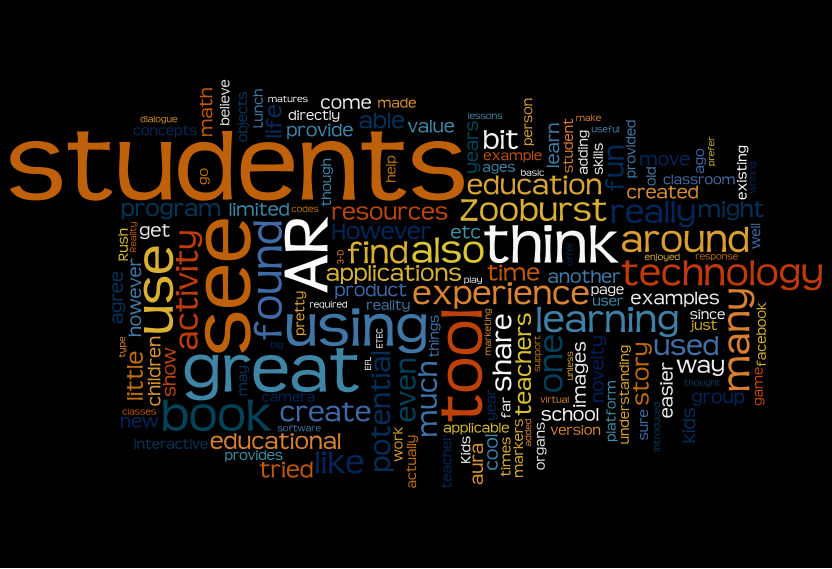Overview:
This Augmented Reality project was designed as a group report for ETEC 522, a course offered by the University of British Columbia focusing on the exploration of entrepreneurial or intrapreneurial ventures involving learning technologies. Based on our personal interests, the five members of our group were assigned to explore the topic of Augmented Reality. Our cohort focused on finding current examples of AR and how these AR technologies are being applied in educational contexts. We quickly realized that although AR has been around for a while, it is an educational technology that several educators and professionals are uninformed about, and do not have the confidence in implementing in their environment. Our goal was to provide educators and professionals with an opportunity to explore AR, ventures in AR, as well as the pros and cons of AR technologies in order to expand their knowledge and understanding of the technology.
Barriers to AR
- Novelty effect: It is difficult to ascertain whether AR will have a long term or a short term impact on education due to a certain initial novelty effect. At first glance, the technology appears to offer promise but we’re left wondering whether it will continue to thrive once the dust settles on the ‘WOW’ factor.
- Limited scope: There are questions as to whether the technology has broad appeal or if it is limited in scope. There appears to be particular value for geography and history courses as additional layers of information could be provided to students through audio-visual depictions of real-time or historical events or to provide a 3D environment to manipulate. Museums also have the potential to breathe new life into the generally lifeless environment by incorporating AR to add a lifelike representation of many historical events, places, or technologies. Can the same be said for most courses or does AR have limited content and courses that maximize its potential?
- Augmented Hyperlink: For many courses, AR appears positioned to simply replace the hyperlink provided by websites which redirect users to additional layers of information, whether through additional reading material, audio or visual stimulation. Does the technology provide enough to encourage users to use this method of content delivery over the standard hyperlink?
Educational Applications:
The pilot cohort provided some useful ideas for educational applications of AR in a K-12 classroom. Here is a summary:
- The use of markers as a tool for objects that are abstract or very small (ie. a cell or an atom) – Lisa Nevoral
- The creation of 3D models through Google SketchUp that can then be viewed using markers – Ben
- The use of Aurasma for innovative and different marketing campaigns – Eva Ziemsen and Jkotler
- The use of Aurasma for explaining tasks and different activities to students when they are at a certain location – ETEC522grp8 and Stammik
- The use of Aurasma for students to have unique stamps on their work that then provide additional information about the student such as a picture – ETEC522grp8
- The use of Aurasma or similar tool for a campus tour for new students using videos or voices of real students – Eva Ziemsen
- The use of Layar for an ecosystem lab, to show the myriad of connections that exist between abiotic and biotic factors – Cunnian
- The use of Layar to create worksheets that include an email address, answer key, video, etc. – Tom Whyte
- The use of Zooburst in language arts lessons, providing students opportunities to learn both literacy and 21st century skills – James and Jennifer Schubertube
Poll Results
The poll results from our inter-activities section of our project home page were compiled online through surveymonkey.com. There were 16 respondents for each question and the results have been summarized below
1) How would you rate your knowledge of AR before this presentation?
a) Expert – 0%
b) Good – 6.3%
c) Average – 31.3%
d) Novice – 62.5%
2) After participating in this weeks presentation, do you see yourself implementing AR in your instructional practice?
a) Likely – 43.8%
b) Maybe – 37.5%
C) Unlikely – 18.8%
Discussion Wordle
After launching our pilot project to our cohort, a week long discussion ensued on our class blog. The text from all the discussion items was inputted into Wordle and is summarized in the visual below.

